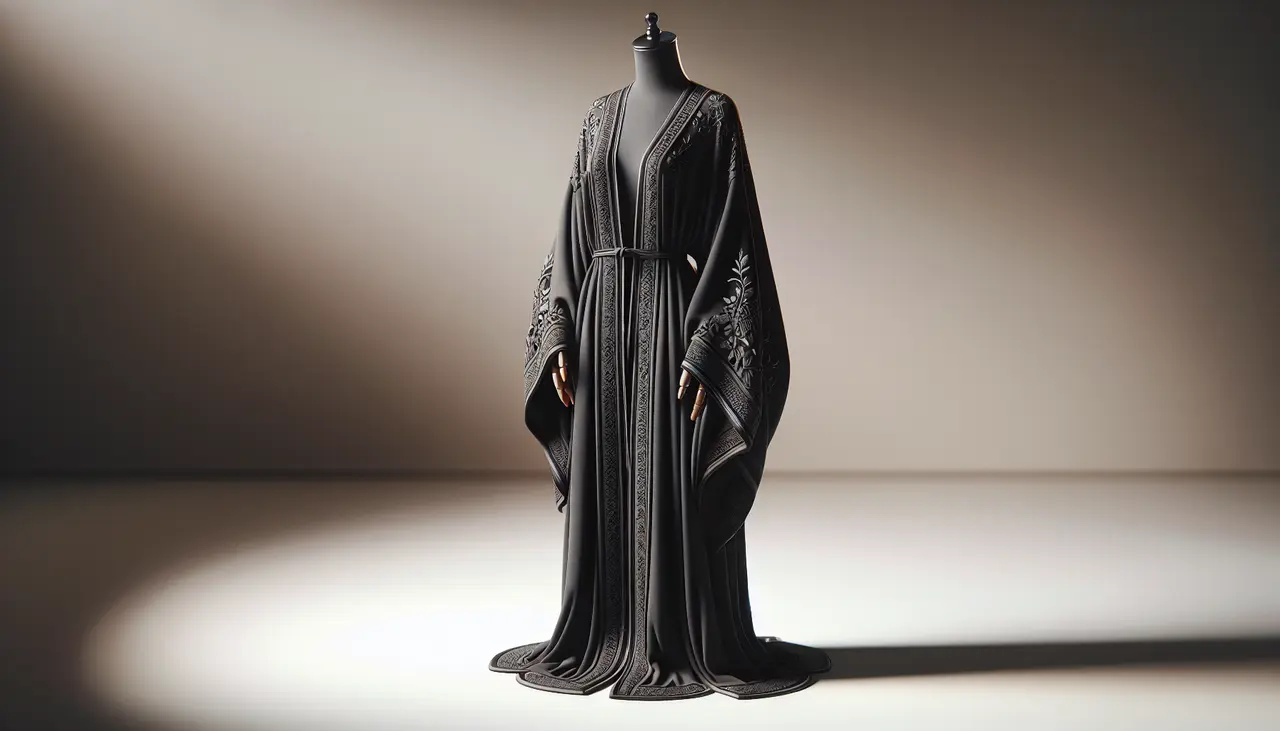Abaya dresses are a distinctive and iconic piece of clothing, particularly in Middle Eastern fashion. They possess a unique charm and cultural significance that sets them apart from other types of dresses. In this FAQ, we’ll explore what makes an Abaya dress so special, delving into its history, design elements, and modern adaptations.
What is an Abaya Dress?
The Abaya is a traditional, loose-fitting over-garment worn by some women in parts of the Muslim world. It is typically a long robe, reaching from the shoulders to the feet, often in black, but can also come in various colors and designs.
The primary purpose of the Abaya is to cover and provide modesty, aligning with Islamic guidelines for women’s attire. Beyond its religious aspect, it is also a cultural staple in countries like Saudi Arabia, the United Arab Emirates, and parts of North Africa.
Worn over everyday clothing, the Abaya serves as an outer layer that is both functional and symbolic. In regions such as the Arabian Peninsula, it is commonly paired with a headscarf and sometimes a face veil, making it a comprehensive modest wear option for women.
Historical Significance of the Abaya
The Abaya has a rich history rooted in the cultural and religious traditions of the Arabian Peninsula. Its origins can be traced back centuries, and it has evolved in style and significance over time.
Traditionally, the Abaya was predominantly black, reflecting a conservative approach. Over the years, however, it has undergone a transformation, resulting in variations that are region-specific. For instance, the design and aesthetics can range from simple to ornately decorated garments, featuring intricate embroidery and vibrant fabrics.
The Abaya’s journey through time is not just a reflection of fashion trends but also shifts in socio-cultural norms. From a strict traditional garb to a more modern and versatile piece, the Abaya’s evolution encapsulates the dynamic history of Middle Eastern societies The Conversation: What is an abaya − and why does it cause such controversy in France?.
Design Elements of an Abaya
Abayas are known for their elegant simplicity. They are usually adorned with minimal decorations, such as embroidery, beading, or sequins, making them both modest and stylish.
Despite its understated design, the Abaya can be a canvas for artistic expression. Designers often play with different elements like sleeve shapes, collar styles, and fabric choices to create unique and appealing versions. This adaptability makes the Abaya a versatile garment that can range from everyday wear to occasion-specific attire.
When examining modern Abayas, you can find designer abayas that incorporate high-quality silk, satin, and other luxurious materials. These fabrics not only add a touch of sophistication but also ensure comfort and durability. Opt for abayas that have contemporary elements like floral prints, metallic embellishments, and bold patterns for a stylish appeal.
Cultural Importance of the Abaya
For many, the Abaya is not just a piece of clothing but a symbol of cultural identity and personal modesty. It plays a significant role in the daily lives of women who choose to wear it, socially and religiously.
In societies where the garment is prevalent, wearing an Abaya signifies adherence to cultural norms and religious commandments. This traditional dress serves as a public affirmation of one’s faith and cultural heritage, making it a deeply symbolic garment.
Beyond cultural borders, Abayas have grown in popularity in various parts of the world. They are worn by women for their elegance and the statement they make. Whether it’s a red-carpet event or a casual outing, the Abaya finds its place in a wide array of social settings globally, showcasing its universal appeal.
Comfort and Practicality
The loose-fitting nature of the Abaya makes it incredibly comfortable to wear, especially in hot climates. It allows for ease of movement and is tailored to provide maximum comfort.
Fabrics like crepe, chiffon, and georgette are often used in making Abayas, ensuring that the garment is lightweight and breathable. These fabric choices make the Abaya a practical option for women who need comfort without compromising on modesty.
Furthermore, the designs of designer Abayas are often carefully crafted to combine aesthetic appeal with functional ease. From breathable natural fabrics to well-fitted cuts that skim over the figure, these designer pieces ensure that women can wear them comfortably throughout the day.
Modern Variations and Adaptations
Today’s Abayas come in a wide range of styles, colors, and fabrics. Many designers are reinterpreting the traditional Abaya to suit contemporary fashion needs while still maintaining its core characteristics.
In regions like Indonesia, for instance, the Abaya has been adapted into what is known as the “jilbab.” These versions are often brightly colored or patterned, reflecting the vibrant culture of the area. This kind of regional adaptation highlights how the Abaya can be personalized to match local cultural aesthetics Abaya.
Modern adaptations of the Abaya also extend to its functionality. Many contemporary designs include features such as detachable layers, pockets, and adjustable lengths, making the garment versatile for multiple occasions.
Summing Up: The Unique Appeal of Abaya Dresses
In conclusion, the Abaya dress stands out from other dresses due to its rich cultural heritage, distinct design features, and versatile nature. Whether it’s the comfort, elegance, or the symbolism that attracts you, there’s no denying that Abaya dresses hold a unique place in the world of fashion.

